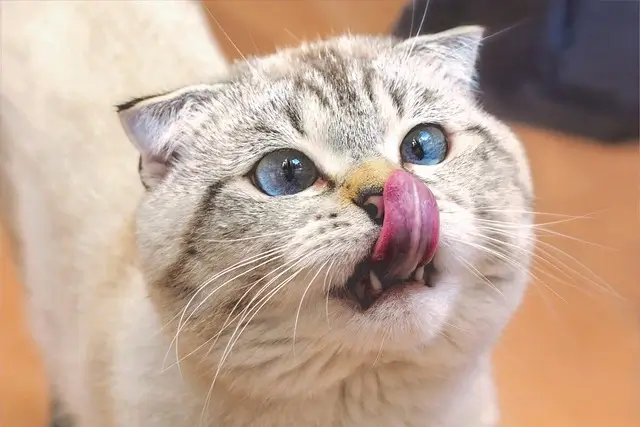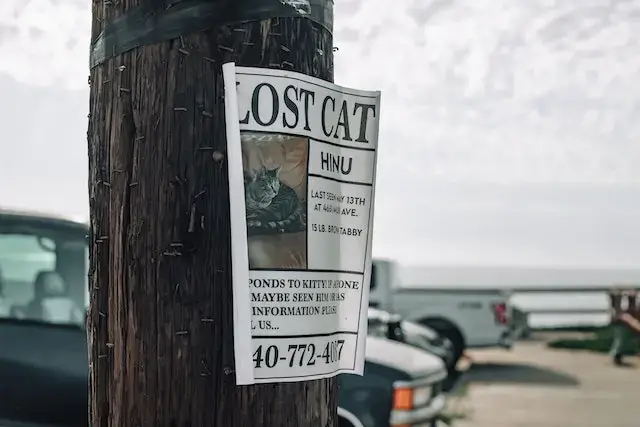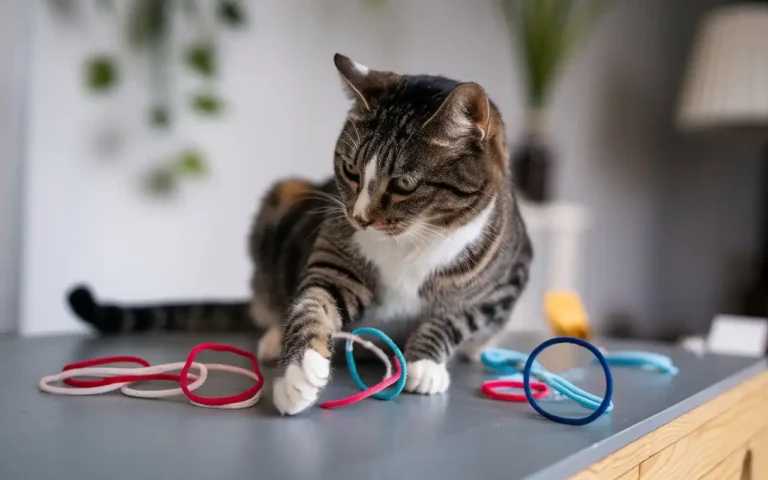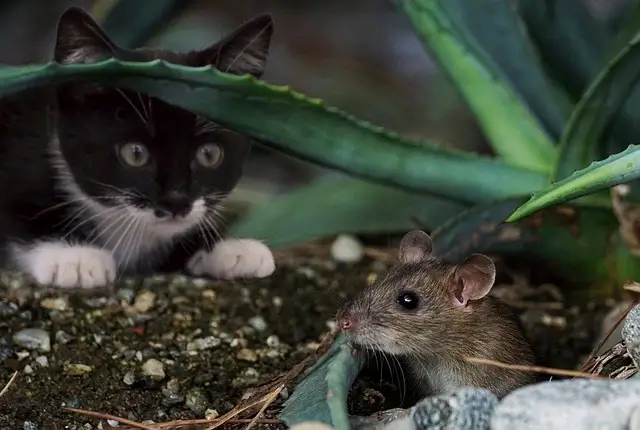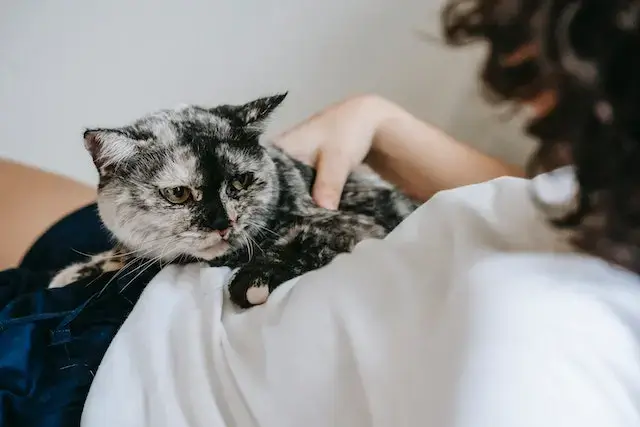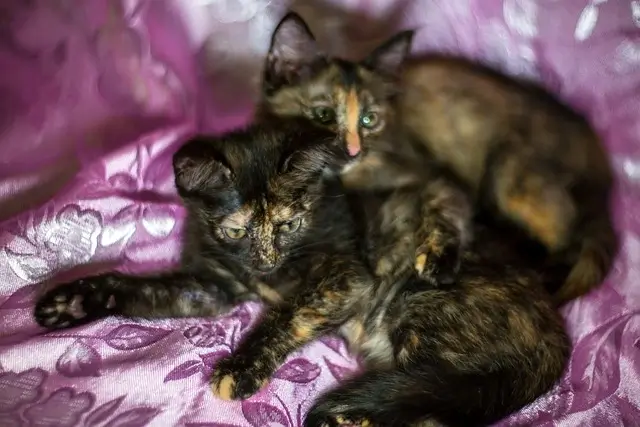Should I Trim My Cat’s Whiskers? What Happens If You Cut Them?
We all love our kitties and want the best for them. And this can be concerning everything from the food we feed them to their whiskers that we think we should trim.
But should I trim my cat’s whiskers? Now that is the question you should be asking, for we have the answers to this question, along with a few facts that could help your cat and you.
See, your cat likes to be petted, but then there are some places that you should not touch, like her whiskers. Why? Read on to know.
Should I Trim My Cat’s Whiskers?
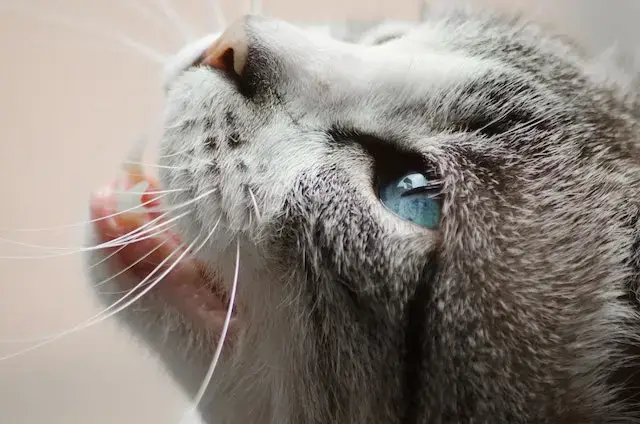
The truth is that a cat’s whiskers don’t need to be trimmed. A cat’s whiskers must not be shortened, so don’t go ahead and get experimentative.
You should never even touch a cat’s whiskers. This means no curling, dyeing, or styling.
And from that, trimming is out of the question. It would be best if you never trimmed your cat’s whiskers.
The whiskers can, at times, shed on their own. That is normal and generally not a cause for worry, but know that you, on your part, shouldn’t be trimming them voluntarily.
Why Are Whiskers Important To Cats?
Whiskers play an essential role in the normal functioning of a cat, serving as the sensory input that a cat needs to navigate her way through the world around her.
Cats do not have eyesight as sharp as us humans, so to make up for what is lacking, a cat comes with whiskers.
In other words, a cat does not enjoy a close-up vision like humans. Instead, she identifies her environment with the use of her whiskers.
This is mainly at night. Her whiskers help her locate things around and keep her from bumping into your furniture and hurting herself.
To cut a long story short, whiskers are very important to a cat. She needs them.
Must Read: Are Cats Rodents?
How Do Whiskers Work?
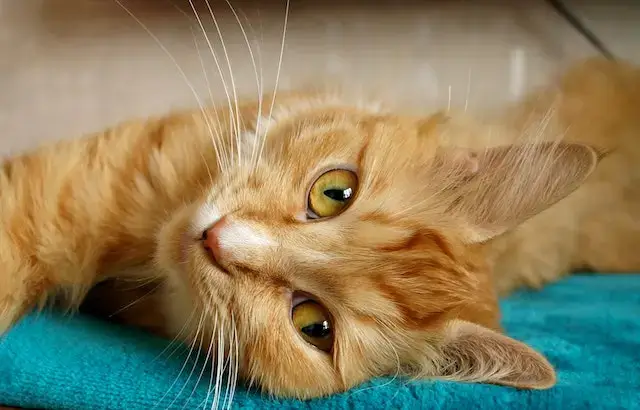
Whiskers are specialized hairs that one finds on the upper lip of a cat, uniformly spaced in rows of four or five with tiny muscles at the base. Often a cat uses these whiskers to communicate.
Whiskers work by delivering information on objects and movements to the sensory cells. And when this happens, the hair vibrates, stimulating the nerves in the follicle.
This is how a cat uses her whiskers to navigate the environment. But it doesn’t end there. Whiskers also protect a cat’s sensory organs, like the eyes.
For instance, the whiskers around the eye immediately respond to an approaching object, alerting the cat to blink and protect her eye. Finally, whiskers also help cats do what they like most, squeezing into corners.
The whiskers on the sides of their nose are mainly responsible for this function as they come at a size similar to that of the cat’s body.
What Happens When You Cut A Cats Whiskers?
The cat is going to be affected. She is going to feel overwhelmed, disoriented, and scared. This is because, in reality, you have taken away a part of her that serves as an essential source of vision.
And you get to lose out, too, as a cat uses her whiskers to tell you how she feels.
For instance, a cat feeling ill will pull his whisker back against his face so that the owner gets the message. And finally, when all is well, she relaxes the whiskers on her face.
Some sources even say that cats use their whiskers to communicate with other cats and protect themselves from environmental dangers.
This is done by turning these muscles towards the source of threat, serving as a warning to their fellow cat.
Now, how will you allow a cat to do all this if you are going to keep meddling with her whiskers?
Can Cats Regrow Whiskers?
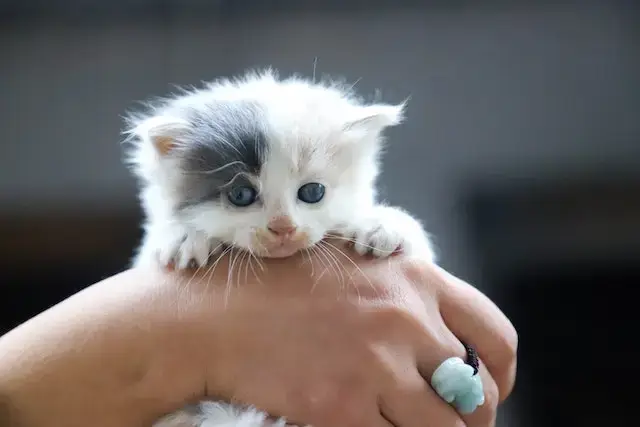
Yes, a cat’s whiskers will grow back in time, and so if, for medical reasons, you had to get them trimmed or removed, don’t worry.
It will take about three to six months, but in the end, you will have them on your cat just as before.
However, this should not be the reason to get experimentative to try out a new look with your cat’s whiskers.
Remember that this is the only feature that whiskers and hair share in common. But whiskers are not hair but a part of your cat’s body.
Observe a cat, and you will notice times when she independently moves her whiskers.
Are Cat Whiskers Sensitive?
Yes, know that what looks like a mustache on your cat’s face is not. Rather, they are a part of your cat’s body and come packed with blood vessels and nerves that can help them discover places and objects around them.
The sensation that they feel is equivalent to that of a human’s fingertips. While we use our fingers to get a feel of the world around us, cats use their whiskers.
You are going to feel pain when you cut your finger, right? Well, it is the same with a cat’s whiskers.
In other words, whiskers don’t just serve as an extra pair of eyes on a cat but an extra set of fingers too.
Can Cats Feel Their Whiskers?
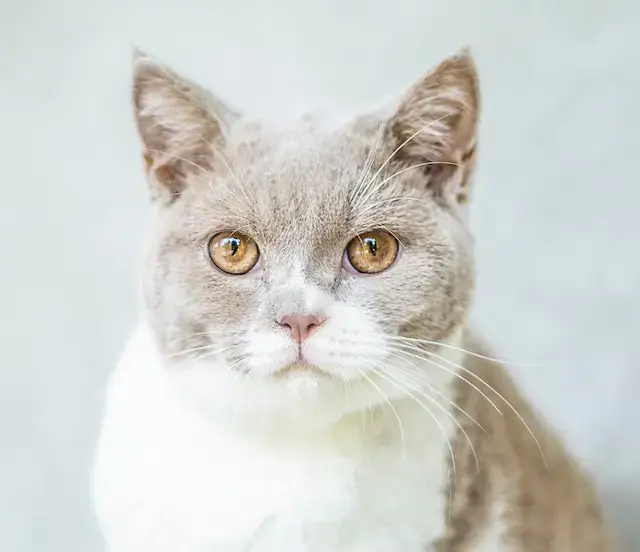
Unlike what they appear to be, whiskers are not like the cat’s fur. They can feel it.
And if you touch them repeatedly just for the fun of it, she will get irritated.
Whiskers on a cat provide a sense of touch, which is why it is so essential for a cat to have whiskers.
However, this is not how humans feel about our skin. Instead, they help a cat sense the vibrations in the air around them, helping them determine the distance at which danger is at a distance or even a source of prey.
It is for these reasons that whiskers are often called tactile hairs.
Do Cats Have Nerves In Their Whiskers?
Okay, the truth is that cats do not have nerves in their whiskers. But their whiskers are connected to nerve endings, which are sensitive and pick all the vibrations in the environment to help a cat judge things like distance and space.
It is these nerve endings that give their whiskers their power to feel sensations, something like the human eyelash that senses an object or particle that is coming near.
It is for these reasons that a cat’s whiskers need to be well cared for if you want your cat to be happy and healthy.
And yes, just in case you didn’t know, plucking your cat’s whiskers is definitely going to hurt her.
Does Cutting Cat Whiskers Hurt Them?
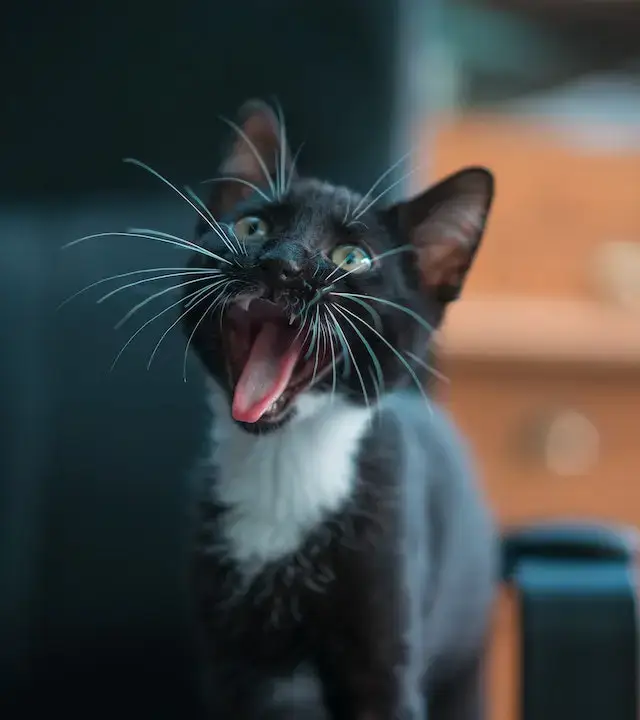
No, it does not hurt. Thankfully, the nerves of a cat’s whiskers are associated with the follicles, not the hair.
So, a cat will not suffer in that sense, but she will indeed be left feeling disoriented and stressed.
Hence, cutting a cat’s whiskers is similar to blindfolding one eye on a human being.
Your cat is now deprived of an organ that she considers vital to communicate, navigate and protect herself.
Don’t do this to them, please.
Why Are Cats Whiskers So Long?
This could be because your cat comes in a bigger size. He is big, isn’t he? Now that is the reason why his whiskers are so long.
In other words, the whiskers on a cat are often in direct proportion to their size.
This is why larger cat breeds like Maine Coons have huge whiskers of about six inches to match the size of their bodies.
However, a cat that gets fatter is not going to lead to whiskers that are bigger. The size mainly refers to the approximate size of the cat breed.
Recommended Reading: Why Do Cats Lick Their Nose?
Are Long Whiskers A Sign Of A Healthy Cat?
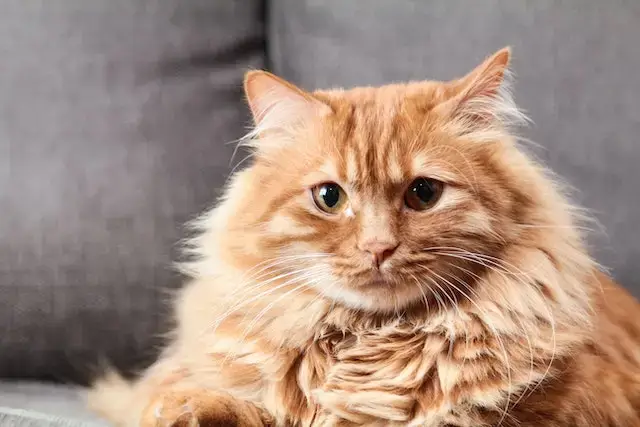
No, the size of her whiskers has nothing to do with your cat’s health. A cat with tiny whiskers can be healthy too.
Now, a hairless Cornish Rex comes with tiny and curly whiskers, but this is just because the cat also comes with a small size. However, the size of her whiskers does not mean to say that this is an unhealthy cat.
However, if you suddenly notice that your cat’s whiskers are shorter than usual, then there could be a possibility of some ill health.
Watch for any symptoms like vomiting or loss of appetite, and then waste no time taking your cat to the vet.
Frequently Asked Questions: Should I Trim My Cat’s Whiskers?
Q1. Can cats whiskers fall out?
Ans: Yes, cats can shed their whiskers naturally, just like human hair. This is a normal process and doesn’t harm the cat.
Q2. How often do cats shed whiskers?
Ans: Cats shed their whiskers occasionally. There’s no specific timeframe. Each whisker shed is replaced with a new one over time.
Q3. Do cats lose whiskers when stressed?
Ans: Yes, stress can cause cats to shed whiskers, but it’s also due to age, diet, or general health issues. It’s important to keep an eye on other behaviors alongside this.
Q4. What happens if a cat loses a whisker?
Ans: If a cat loses a whisker, it can impact its spatial awareness temporarily. However, new whiskers grow back and restore the balance.
Q5. Do cat whiskers help with balance?
Ans: Yes, cat whiskers are sensitive to changes in surroundings, helping cats with balance and spatial navigation.
Q6. Do cats have whiskers all over their body?
Ans: Yes, cats have whiskers on their face and also at the back of their front legs, which aid in hunting and other tactile experiences.
Q7. Why Does My Cat Have Whiskers On Her Legs?
Ans: Leg whiskers help cats gauge the size of openings, assisting in hunting and navigation.
Q8. Can you trim cat’s eyebrow whiskers?
Ans: No, as said earlier, trimming a cat’s whiskers can disrupt its spatial awareness and balance. It’s not recommended.
Final Thoughts
Today you learned a lot about your cat’s whiskers. It’s surprising how this little part of the body, which at a distance can even go unseen, can serve such an important purpose.
But that is how it is. So, the next time you look at your cat’s whiskers, you will hopefully not be tempted to conduct some experiments with it.
Whiskers are not just something that adds to your cat’s cuteness but has an important role to play, so let your cat’s whiskers be. They are beautiful the way they are. Let your cat be.

